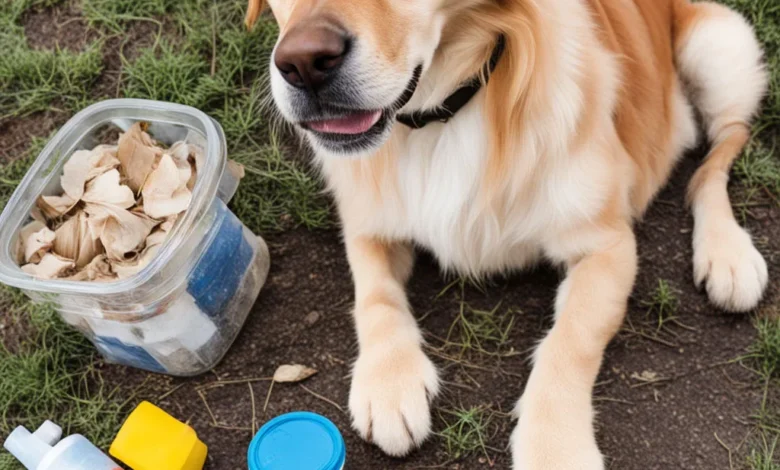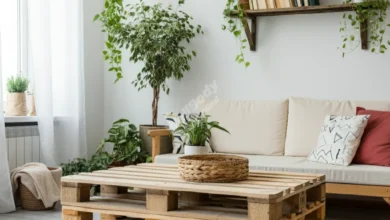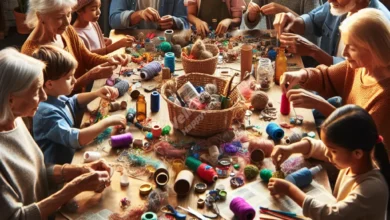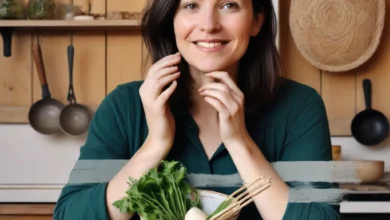Paws and Reflect: Zero Waste Practices for Pet Owners

Did you know that the average dog owner spends about $1,200 per year on their furry friend? While our pets bring us joy and companionship, they can also contribute significantly to our environmental footprint. But don’t worry – there’s good news! By adopting zero waste pet care practices, we can show love to both our pets and the planet.
In this guide, we’ll explore how to become an eco-friendly pet owner without compromising on the quality of care for your beloved animal companions. From sustainable food choices to eco-conscious grooming, we’ll cover everything you need to know to reduce your pet’s environmental pawprint.
Understanding Zero Waste for Pet Owners
What is Zero Waste Pet Care?
Zero waste pet care is an approach that aims to minimize the environmental impact of pet ownership. It involves making conscious choices about the products we use for our pets and how we dispose of pet-related waste. The goal is to reduce, reuse, and recycle as much as possible in our pet care routines.
Common Sources of Pet-Related Waste
As pet owners, we often overlook the amount of waste our furry friends generate. Some common sources include:
- Food packaging
- Plastic toys
- Disposable grooming products
- Pet waste bags
- Litter and bedding
The Environmental Impact of Pet Ownership
Our pets’ carbon pawprints can be surprisingly large. Consider these facts:
- A medium-sized dog has an annual carbon footprint of about 770 kg CO2e (carbon dioxide equivalent)
- Pet food production contributes significantly to greenhouse gas emissions
- Plastic pet waste bags can take up to 500 years to decompose in landfills
By adopting sustainable pet ownership practices, we can dramatically reduce this impact and contribute to a healthier planet.
Benefits of Zero Waste Pet Care
Embracing eco-friendly pet practices offers numerous benefits:
- Reduced environmental impact: Less waste in landfills and fewer resources consumed
- Cost savings: Many zero waste solutions are more economical in the long run
- Healthier pets: Natural, eco-friendly products often contain fewer harmful chemicals
- Peace of mind: Knowing you’re doing your part for the environment while caring for your pet
In the next sections, we’ll dive into practical strategies for implementing zero waste practices in various aspects of pet care. From food choices to waste management, you’ll discover how small changes can make a big difference in your journey towards sustainable pet ownership.
Sustainable Pet Food Choices
One of the biggest impacts we can make in zero waste pet care is through our food choices. Let’s explore how to make more sustainable decisions when it comes to feeding our furry friends.
Choosing Eco-Friendly Pet Food Brands
When selecting pet food, consider these criteria:
- Sustainable sourcing: Look for brands that use responsibly sourced ingredients
- Minimal packaging: Opt for foods with recyclable or compostable packaging
- Local production: Choose locally produced foods to reduce transportation emissions
- Ethical practices: Support companies with strong environmental and animal welfare policies
Benefits of Homemade Pet Food
Making your own pet food can be a great eco-friendly pet practice. Here are some benefits:
- Control over ingredients: You know exactly what’s going into your pet’s food
- Reduced packaging waste: Buy ingredients in bulk to minimize packaging
- Customization: Tailor the diet to your pet’s specific needs
- Cost-effective: Often cheaper than premium commercial pet foods
Remember: Always consult with a veterinarian before switching to a homemade diet to ensure it meets all your pet’s nutritional needs.
Bulk Buying and Proper Storage
Buying pet food in bulk can significantly reduce packaging waste. Here are some tips:
- Invest in airtight containers to keep food fresh
- Store in a cool, dry place to prevent spoilage
- Buy only what you can use before the expiration date
- Consider splitting large purchases with other pet owners
Composting Pet Food Scraps
Many pet food scraps can be composted, reducing waste sent to landfills. However, avoid composting meat or dairy products to prevent attracting pests.
Eco-Friendly Pet Supplies
Toys
Playtime doesn’t have to come at the cost of the environment. Here are some sustainable pet ownership ideas for toys:
DIY Pet Toy Ideas:
- Braided t-shirt rope: Great for dogs who love to tug
- Cardboard tube puzzles: Fill with treats for mental stimulation
- Sock ball: Stuff an old sock with catnip for a feline-friendly toy
Choosing Durable and Recyclable Commercial Toys:
- Look for toys made from natural materials like rubber or cotton
- Choose high-quality, durable toys that will last longer
- Check if the toy or its packaging is recyclable
Upcycling Household Items:
- Empty plastic bottles: Remove labels and caps for a crinkly dog toy
- Old tennis balls: Perfect for fetch games
- Cardboard boxes: Cats love to explore and hide in them
Bedding and Furniture
Sustainable Materials for Pet Beds:
- Organic cotton
- Hemp
- Recycled materials
Tips for Extending the Life of Pet Bedding:
- Wash regularly to prevent buildup of dirt and odors
- Repair small tears promptly to prevent further damage
- Use removable, washable covers for easy cleaning
Repurposing Old Furniture:
- Convert an old side table into a cozy cat bed
- Transform a wooden crate into a dog bed with added cushioning
Grooming Tools
Biodegradable Grooming Products:
- Look for shampoos and conditioners in recyclable packaging
- Choose biodegradable wipes for quick clean-ups
Reusable or Compostable Grooming Tools:
- Bamboo brushes with natural bristles
- Metal combs that last a lifetime
- Washable, reusable grooming mitts
DIY Pet Shampoos and Treatments:
Simple Oatmeal Shampoo Recipe:
- 1 cup finely ground oatmeal
- 1 cup baking soda
- 4 cups warm water
Mix ingredients, apply to pet’s coat, rinse thoroughly.
By making thoughtful choices about our pets’ food and supplies, we can significantly reduce waste while still providing excellent care. In the next section, we’ll explore waste management solutions for a truly zero waste pet care routine.
Waste Management Solutions
Proper waste management is crucial for sustainable pet ownership. Let’s explore eco-friendly solutions for dealing with pet waste and cleaning up after our furry friends.
Litter and Waste Disposal
Biodegradable Litter Options for Cats
Traditional clay litters are non-biodegradable and often strip-mined. Consider these alternatives:
- Wood pellets: Made from reclaimed lumber waste
- Corn or wheat-based litters: Biodegradable and flushable (check local regulations)
- Recycled paper litter: Great for cats with sensitive paws
Eco-Friendly Poop Bags for Dogs
When picking up after your dog, opt for:
- Compostable bags made from plant-based materials
- Recycled plastic bags to give plastic a second life
- Newspaper for a zero-waste option (where allowed)
Composting Pet Waste Safely: A Step-by-Step Guide
- Choose the right system: Use a separate composter for pet waste
- Collect waste in biodegradable bags
- Add to composter with sawdust or wood chips
- Maintain proper temperature: Keep above 145°F (63°C) to kill pathogens
- Let it mature: Allow at least a year before using
- Use only on non-edible plants
Note: Never compost waste from cats or dogs that eat raw meat diets due to potential parasites.
Cleaning Products
Natural, Non-Toxic Cleaning Solutions
- Vinegar and water: Effective for most pet messes
- Baking soda: Great for odor absorption
- Hydrogen peroxide: For tough stains (spot test first)
Reusable Cleaning Tools
- Microfiber cloths: Washable and effective
- Mop with reusable pads: Reduces disposable wipe waste
- Durable scrub brushes: Look for ones with replaceable heads
DIY Pet-Safe Cleaning Recipe
All-Purpose Cleaner:
- 1 cup white vinegar
- 1 cup water
- 10 drops essential oil (pet-safe varieties like lavender or lemon)
Mix in a spray bottle and use as needed.
Veterinary Care and Medications
Choosing Eco-Conscious Veterinary Practices
Look for veterinary clinics that:
- Use digital records to reduce paper waste
- Recycle medical supplies when possible
- Offer telemedicine options to reduce travel emissions
Proper Disposal of Pet Medications
- Never flush medications down the toilet
- Check with your local pharmacy for take-back programs
- Use medication disposal bags designed to neutralize drugs
Natural Remedies for Common Pet Ailments
| Ailment | Natural Remedy |
|---|---|
| Mild Digestive Issues | Pumpkin puree or bone broth |
| Minor Skin Irritations | Oatmeal bath or coconut oil |
| Anxiety | Lavender essential oil (diffused, not applied) |
| Joint Pain | Fish oil supplements |
Always consult your veterinarian before trying natural remedies.
Adopting vs. Shopping
Benefits of Pet Adoption for Waste Reduction
- Reduces demand for puppy and kitten mills
- Decreases overall pet overpopulation
- Often comes with initial vaccinations and spaying/neutering, reducing future medical waste
How to Find Eco-Friendly Pet Adoption Centers
- Research local shelters and their practices
- Look for no-kill shelters that prioritize animal welfare
- Check for partnerships with sustainable pet supply brands
- Ask about their waste management practices
Supporting Animal Shelters
- Donate gently used pet supplies
- Volunteer your time for dog walking or socialization
- Foster animals to reduce shelter overcrowding
- Spread awareness about adoption benefits on social media
By implementing these zero waste pet care practices, we can significantly reduce our pets’ environmental impact while still providing them with excellent care. In the next section, we’ll discuss how to create a comprehensive zero waste pet routine and overcome common challenges.
Creating a Zero Waste Pet Routine
Implementing eco-friendly pet practices into your daily life doesn’t have to be overwhelming. Let’s break it down into manageable steps.
Daily Practices for Reducing Pet-Related Waste
Use this checklist to guide your daily routine:
- [ ] Use reusable or compostable poop bags
- [ ] Measure pet food to avoid waste
- [ ] Use washable dishes for food and water
- [ ] Opt for playtime with durable or DIY toys
- [ ] Clean with eco-friendly products
Monthly and Yearly Eco-Friendly Pet Care Goals
Monthly Goals:
- Reassess pet supplies and replace one item with a sustainable alternative
- Try a new DIY pet treat or toy recipe
- Deep clean pet bedding to extend its life
Yearly Goals:
- Schedule a check-up with an eco-conscious vet
- Evaluate your pet’s diet for sustainability
- Organize a pet supply swap with other pet owners
Involving the Whole Family in Zero Waste Pet Care
- Assign responsibilities: Let each family member take charge of an aspect of eco-friendly pet care
- Make it fun: Create challenges or rewards for meeting zero waste goals
- Educate: Teach children about the importance of sustainable pet ownership
Overcoming Challenges
Common Obstacles in Zero Waste Pet Care
- Limited availability of eco-friendly pet products
- Higher upfront costs of some sustainable items
- Time constraints for DIY solutions
- Resistance to change from family members or pets
Solutions and Alternatives
- Shop online for a wider range of eco-friendly pet products
- Focus on long-term savings of durable, sustainable items
- Start small: Implement changes gradually to find what works for you
- Educate and involve others in the process to gain support
Balancing Pet Health and Environmental Concerns
- Consult with your veterinarian before making significant changes to your pet’s diet or care routine
- Prioritize your pet’s health and well-being while making sustainable choices where possible
- Remember that small changes add up: Every eco-friendly choice makes a difference
Conclusion
Embracing zero waste pet care is a journey that benefits not only our beloved companions but also the planet we all share. By making thoughtful choices about pet food, supplies, and waste management, we can significantly reduce our pets’ environmental pawprint without compromising on their care.
Remember, the goal isn’t perfection but progress. Start with small changes, celebrate your successes, and don’t be discouraged by setbacks. Every step towards sustainable pet ownership is a step in the right direction.
As you implement these eco-friendly practices, you’ll likely find that many of them save you money, simplify your routines, and even improve your pet’s health. Plus, you’ll have the satisfaction of knowing you’re setting a positive example for other pet owners and future generations.
So, are you ready to take the leap into zero waste pet care? Your furry friend – and Mother Earth – will thank you!
Additional Resources
To support your journey towards eco-friendly pet practices, here are some valuable resources:
Recommended Books on Eco-Friendly Pet Care
- “The Eco-Dog: A Guide to Environmentally Friendly Pet Ownership” by Corbett Marshall
- “Eco-Friendly Pet Ownership: A Guide to Sustainable Living with Animals” by Leah Ingram
- “The Complete Guide to Holistic Cat Care” by Celeste Yarnall
Useful Websites and Apps
- Green Paws: A comprehensive guide to eco-friendly pet products
- Pet Food Recall: Helps you stay informed about pet food safety
- DoggyDo: An app that helps locate pet waste bins and dog-friendly areas
Local Organizations Supporting Sustainable Pet Ownership
- Check with your local animal shelter for eco-friendly pet care workshops
- Look for community pet supply swap events in your area
- Join online forums or social media groups focused on sustainable pet ownership in your region
By utilizing these resources and implementing the strategies we’ve discussed, you’ll be well on your way to becoming a champion of zero waste pet care. Remember, every small action counts towards creating a more sustainable future for our pets and our planet. Let’s paws and reflect on how we can make a positive change today!



